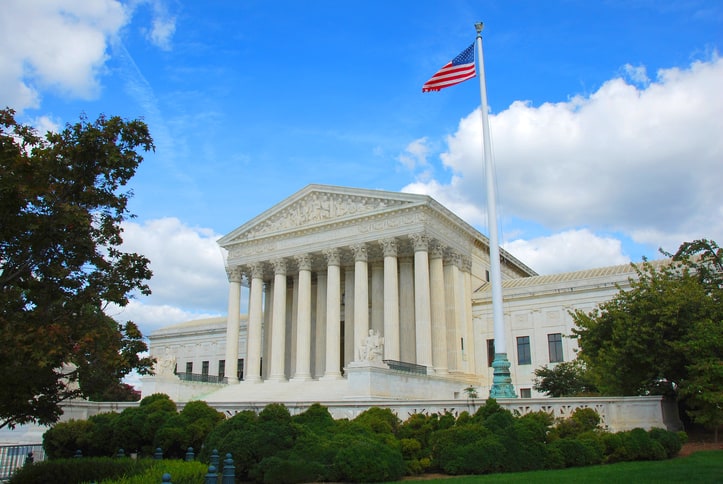Union Membership Post-Janus

 It has been difficult to gauge the impact of the landmark Supreme Court decision in Janus v. AFSCME. In this ruling, the Supreme Court held that forcing non-members to pay fees to a union as a condition of employment is a violation of the First Amendment.
It has been difficult to gauge the impact of the landmark Supreme Court decision in Janus v. AFSCME. In this ruling, the Supreme Court held that forcing non-members to pay fees to a union as a condition of employment is a violation of the First Amendment.
Predictions on the fallout from Janus ran the gamut. Some predicted a mass exodus, while other believed few public workers would resign their membership.
How Janus impacted labor unions is hard to pin down because labor unions do not voluntarily release membership numbers. Currently, only labor unions with exclusively private-sector members or a mix of private and public workers are required to file annual financial reports with the Department of Labor. These financial reports include information on a union’s total membership and document the amount of workers who are non-members but forced to pay union fees, commonly known as “agency fee” payers. These reports are the only reliable and publicly reported data on union membership and provide a limited window into how Janus has impacted public-sector unions.
One union used the release of this financial report to tout membership gains, despite the Supreme Court’s effort to purportedly “defund and defang” unions. In a recent press release, the American Federation of State, County, and Municipal Employees (AFSCME) puffed out its chest with pride declaring “Workers chose to stick with their union.” The topline figures AFSCME promoted show they have gained 9,097 new members and 18,638 retirees.
Yet, these membership numbers only tell half the story. The Janus decision only immediately freed public-sector workers who were “agency fee” payers. And on this side of the ledger, the numbers are far less glowing.
In 2016 and 2017, AFSCME reported 110,836 and 112,233 agency fee payers, respectively. In 2018, AFSCME reported a mere 2,215 agency fee payers, representing a loss of about 100,000. This is an enormous loss of funds, especially considering agency fees can amount to as much as 80 percent of full membership dues.
The National Education Association (NEA), the largest teachers union, experienced similar changes to union membership as AFSCME. NEA saw a slight uptick in membership in 2018, up to 3,002,516 from 2,987,077 in 2017. Yet, the NEA reported zero agency fee payers in 2018. In 2016 and 2017, the NEA reported about 87,000 agency fee payers. So, despite the gain of 15,439 members from 2017 to 2018, the union lost payments from 87,000 workers.
The American Federation of Teachers (AFT) is an outlier, but merely due to accounting practices. Like AFSCME and NEA, the AFT saw a small increase in membership. In 2018, AFT membership is reported as 1,677,775, up from 1,591,911 in 2017. Unlike it rival unions, AFT only reported a slight decrease in agency fee payers. In 2016 and 2017, AFT reported 89,375 and 93,844 agency fee payers. In 2018, AFT counted 85,788 workers as agency fee payers, a loss of only 8,056. Yet, the AFT’s fiscal year ended on June 30, 2018. So, the AFT’s financial report only reflects the union’s agency fee payer situation a few days after the Janus decision. It is probable that AFT will see the same impact as its rival public-sector unions in its 2019 financial report to the DOL.
As these union membership numbers suggest, AFSCME is a little too bullish in its press release. Union membership in the public-sector has not plummeted, but those who never wanted to associate with a union representative in the first place stopped paying fees entirely and unions were unable to persuade these workers to join.
Further, public-sector unions have long had practices in place to keep union members trapped, and those efforts were ramped up prior to Janus. When a worker joins a union they would do well to read the fine print on the membership form. In many instances, the membership forms limit when a worker may cancel dues payments. Often, the union membership form only allows workers to opt-out of paying dues during an arbitrary and short annual window (this period of time can be as little as 10 days). The Washington state-based Freedom Foundation is challenging this practice in California.
To date, it is far too early to predict the how Janus will impact government unions. Numerous public employees allege they are still being charged illegal union dues payments, class action lawsuits are asking courts to order a refund of forced union dues, and some states have been less than enthusiastic about enforcing the new precedent.
Until these issues, and others, are resolved, it is impossible to predict whether union membership will experience major change. Yet, it has been seen in the private-sector when workers are able to exercise free choice they often choose to forgo union membership.